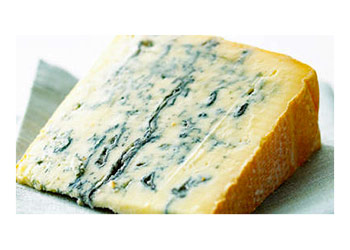Green Mold on Cheese – Cheese is a popular food around the world. There are so many types of cheeses that you can choose on the market, such as cheddar, mozzarella, parmesan, camembert, and many more. Each cheese has their own uniqueness and characteristic. The use of these cheeses on cooking really depend on what kind of meals do you want to cook. However, cheese is also a food that can be spoiled easily if it is not stored well. Most cheese get spoiled by the growth of mold on its surface. Green mold on cheese is one of the most common appearance you can find in your daily life. Other than green mold, red mold and black mold are also often occur on cheese.

Green mold is a term to define several species of mold that have greenish color or exhibit green color in one or more phases in their life cycle. Aspergillum, Cladosporium, and Penicillium are some of the most common mold species that generates green color. However, these species also generates other colors, such as brown, yellow, or gray. The first occurrence sign of green mold on cheese is indicated by dark spots on the surface of the cheese. The longer exposure it gets, the mold will be getting thicker, creating fuzzy layers of green mold. It also creates a common musty odor that often occur with the growth of any mold types.
The reason why green mold often appear on cheese is because cheese offer a nutritious environment for mold to grow. The moisture environment of kitchen where people usually store cheese is very suitable for mold to grow. Green mold may possess health risk, especially for people in vulnerable groups. These vulnerable groups include infant, elderly, children, and people with compromised immune systems. Some mold species, such as Penicillium and Cladosporium can produce mycotoxins, which has been widely associated with the risk of cancer. Prolonged exposure to mold, especially through foods, is not recommended.
However, if you are healthy and only accidentally eating green mold on cheese, it may not exhibits immediate effect to your health. The least you will experience is nausea and diarrhea and most of times, there symptoms are transient. For vulnerable groups, the symptoms that often occur after mold exposure are itchiness, skin rashes, headache, dizziness, inexplicable tiredness, eye problems (teary eyes, itchiness, and redness), runny nose, sneezing, and coughing. If these symptoms occur after apparent exposure, immediately visit a doctor to be treated properly.
See also Some Tips and Information to Deal with Green Mold in Bathroom
If you spot mold growing on soft cheeses, including ricotta cheese, cottage cheese, and cream cheese, the best solution is to discard these cheeses. Disposal is also advised for sliced, shredded, and crumbled cheese. Soft cheese allow the mold to create threads all over the cheese. Along with the green mold, various harmful bacteria, including E. coli, Salmonella, Brucella, and Listeria and also grow and threat your health.
However, if you find green mold on cheddar cheese, red mold on Colby cheese, green mold on parmesan cheese, and other types of mold on semisoft and hard cheeses, you can simply cut the moldy area away and consume the unspoiled parts. Generally, mold will not be able to penetrate through these types of cheese. Cut away at least 2.5 centimeters or an inch below and around the moldy area. Make sure to put the knife away from the mold to avoid contaminating other areas of the cheese. Use the unspoiled parts immediately before the mold start growing again or store it on dry place to slow down the growth of mold.
Here are some tips to avoid growing green mold on cheese:
- Use cheese paper or cheese bags to cover your cheese. This type of paper is porous, which allow the cheese to breath without exposing to open air too much.
- Do not wrap it too loosely or tightly: if you leave some space for your cheese, you can reduce the ammonia odor from your cheese. However, leaving too much space will make your cheese hardened and dried out.
- Replace your paper after unwrapping: replacing the wrapping paper every time you open it will make your cheese last longer than using the same paper over and over. Reused paper will not provide the breathable quality offered by fresh wraps.